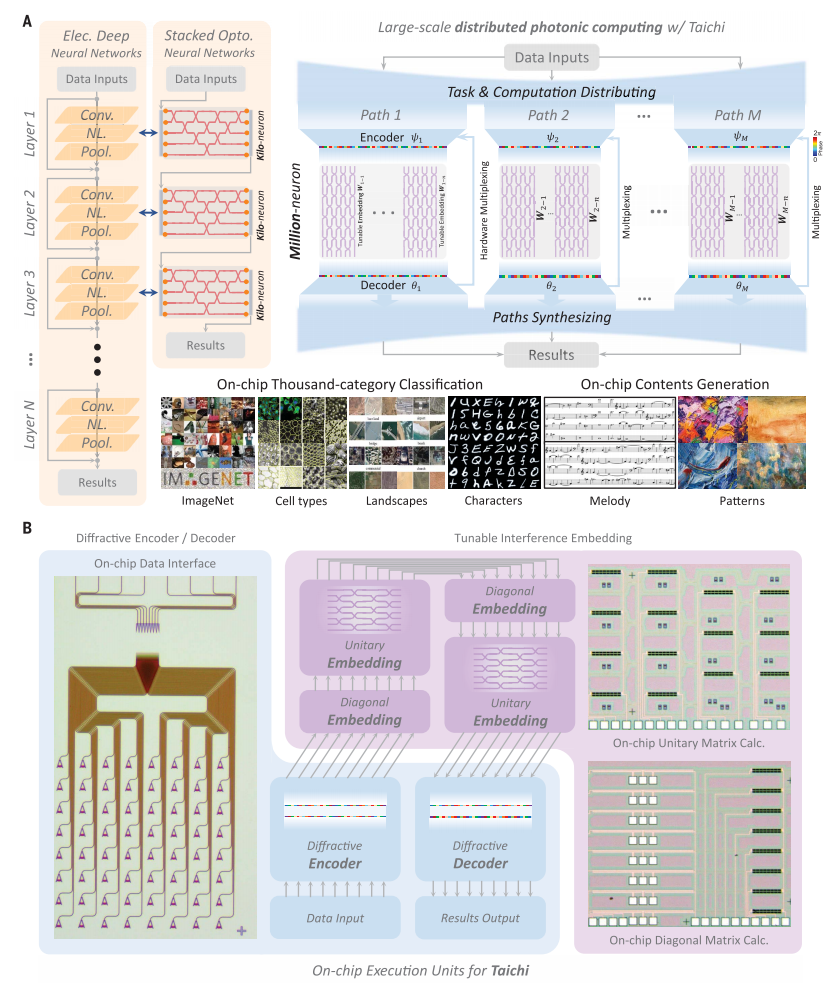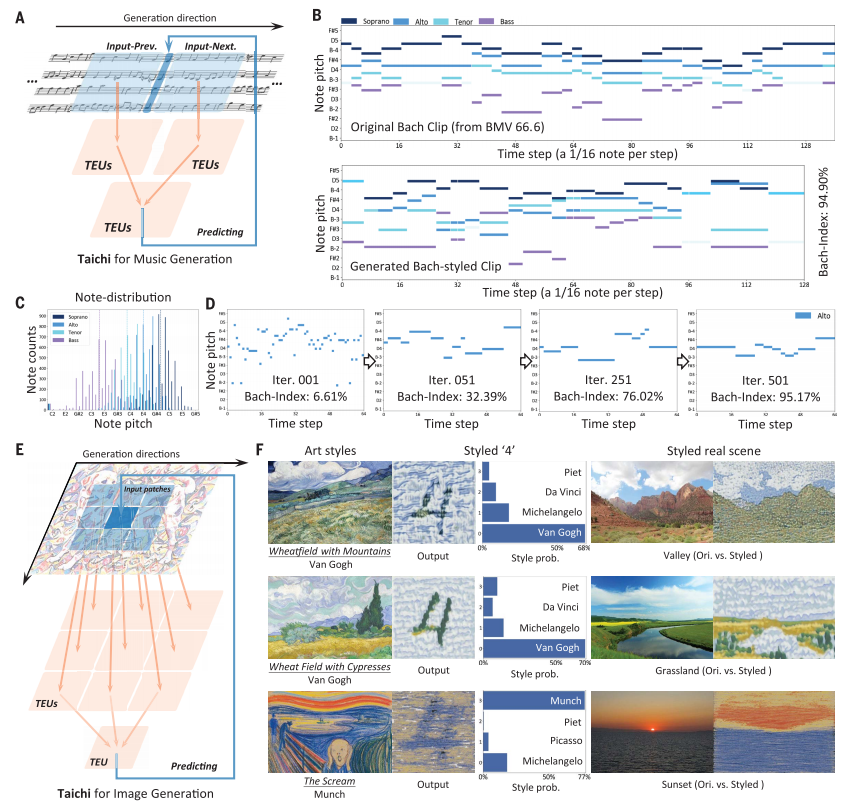China's "Taichi" Photonic Chip Could Bright AI

In ancient Chinese philosophy, Taichi, considered the origin of the universe akin to the primordial singularity preceding the Big Bang, divided itself into as Yin and Yang, two complementary yet contrasting forces that ultimately brought forth the entirety of existence.
The intertwined yet competing forces of Yin and Yang have captivated and inspired the scientists from Tsinghua University in Beijing. In a significant scientific development, these Tsinghua researchers have unveiled “Taichi,” a revolutionary photonic chip that promises to supercharge artificial general intelligence (AGI) while achieving remarkable energy efficiency. The breakthrough, published in the journal Science, introduces a new era of computing that combines the power of light with advanced machine learning capabilities.
Artificial general intelligence, which aims to replicate human-like intelligence in machines, requires substantial computing performance. However, traditional electronic devices, such as graphic processing units (GPUs), struggle to provide the necessary speed and efficiency for complex AGI tasks. Enter Taichi, a large-scale photonic chiplet that overcomes these limitations and opens up exciting possibilities for AGI.
Unlike traditional electronic circuits, Taichi utilizes integrated photonic circuits, harnessing the speed of light for processing information. This advantage allows for superior performance and efficiency in handling tasks like image recognition, neural networks, and more. However, previous photonic computing architectures faced challenges due to errors and limited scalability, restricting their application to simple tasks.
To address these limitations, the researchers designed Taichi, an advanced photonic chiplet that combines an integrated diffractive-interference hybrid design with a distributed computing architecture. This architecture enables Taichi to achieve millions-of-neurons capability, delivering an astonishing 160 tera-operations per second per watt (TOPS/W) energy efficiency.
 Taichi: A large-scale photonic chiplet with a distributed computing architecture for a million-neuron on-chip network model.
Taichi: A large-scale photonic chiplet with a distributed computing architecture for a million-neuron on-chip network model.
The Taichi chiplet has shown its impressive abilities through some remarkable accomplishments. For instance, it was able to accurately classify items into 1000 different categories with an accuracy of 91.89%.
Another noteworthy achievement of Taichi is its ability to generate high-quality content using artificial intelligence. In fact, it outperformed existing methods by a significant margin. Taichi’s content generation is like producing images that are not only visually appealing but also exhibit a level of detail and realism that surpasses what current technology can achieve.
Behind this exceptional performance are several remarkable innovations. One of the key innovations of Taichi lies in its scalable and robust distributed computing architecture. Being scalable means that Taichi can handle increasing workloads and large-scale data processing without compromising performance. While its robustness ensures that Taichi can maintain its effectiveness even in challenging conditions or when faced with potential failures.
Taichi harnesses the principles of optical diffraction and interference, which are phenomena related to the behavior of light waves. Optical diffraction refers to the bending or spreading of light when it encounters obstacles or passes through apertures. Interference occurs when multiple light waves overlap, resulting in the reinforcement or cancellation of certain regions. Taichi utilizes these optical phenomena to process high-dimensional inputs efficiently. By leveraging optical diffraction and interference, Taichi can effectively handle complex computational tasks.
A significant component of Taichi’s architecture is the fully reconfigurable Mach-Zehnder interferometer (MZI) arrays. Mach-Zehnder interferometers are devices that utilize the interference of light waves to perform operations like splitting, combining, and modulating optical signals. In the context of Taichi, the MZI arrays are fully reconfigurable, allowing their configurations to be dynamically adjusted based on the specific requirements of tasks. This flexibility enables Taichi to optimize its operations according to the computations it needs to perform.
Taichi also employs a distribution protocol, which involves dividing large computational tasks into smaller subtasks. This protocol facilitates parallel processing across multiple Taichi chiplets, where each chiplet works on a different subtask simultaneously. Parallel processing enhances computational efficiency and enables Taichi to handle computationally intensive tasks more effectively.
Compared to existing photonic neural network chips, Taichi offers a twofold improvement in energy efficiency while maintaining comparable computing accuracy. It also exhibits remarkable area efficiency, further pushing the boundaries of photonic computing for AGI tasks. The introduction of Taichi marks a significant milestone in the pursuit of high-performance computing resources for modern AI applications.
With its outstanding capabilities, Taichi opens up new avenues for large-scale photonic computing and advanced AI tasks. It not only paves the way for the development of more complex AGI models but also harnesses the full potential of photonics in the realm of artificial intelligence.
The research team behind Taichi believes that their innovation will keep pace with the ever-increasing demands for computing resources in the field of AI. As AGI continues to evolve, Taichi’s energy-efficient photonic computing offers a promising solution to meet the demands of modern AI applications.
The successful development of Taichi represents a major step forward in the quest for efficient and powerful artificial general intelligence. As researchers continue to explore the possibilities of photonic computing, the future of AI looks brighter and more efficient than ever before.
 Large-scale photonic chiplets for versatile content generations.
Large-scale photonic chiplets for versatile content generations.
DOI: 10.1126/science.adl1203



